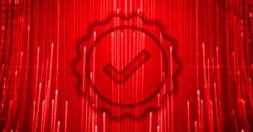 Storms. Floods. Heatwaves. System outages can be caused by a natural disaster, general hardware failure or any number of environmental conditions. When the system fails, how do you access your network equipment? Maybe it’s not just via the serial console port anymore.
Storms. Floods. Heatwaves. System outages can be caused by a natural disaster, general hardware failure or any number of environmental conditions. When the system fails, how do you access your network equipment? Maybe it’s not just via the serial console port anymore.
Our reliance on network infrastructure continues to grow, especially with the acceleration of Big Data and IoT. This demands even denser infrastructure as more data traverses networks, with much of the processing occurring at the distributed edge. Without an Out-of-band (OOB) management system, even small problems can cause havoc, leading to significant downtime, lost revenue and brand damage.
Any range of problems can start the count-down to an outage storm. Cable interconnects (copper or fiber), power supplies, switches, dense compute chassis, storage arrays, and air-conditioning are just a few potential sources of pain. Most of these network elements are increasing in complexity, running sophisticated software stacks and susceptible to bugs, exploits, cyber-attacks or environmental issues.
Out-of-band management appliances such as terminal and console servers have helped network designers and administrators avert disasters for more than 25 years, giving access to a node’s serial (RS232) console port to get it operational again or perform a firmware upgrade.
But access to system console ports has changed in the last decade. The humble serial console port is not the only option. More systems and devices are deploying USB and Ethernet management ports. This move was fueled by deletion of serial ports on laptops which were often used as onsite crash-carts. Now USB ports reign supreme, so many switches and routers have a USB or serial or both consoles.
Sophisticated, software-defined network devices may now employ separate control-plane elements (x86 server blade, Ethernet MGT port, possibly motherboard or lights-out controllers) and data-plane elements (ASICS and ARM SoCs with serial or USB console). Each often has a different management port but within the same chassis.
It’s now more challenging for network designers, installers and maintainers to anticipate the mix of console port types, and decide on a management appliance, hubs and switches to suit every environment. Nowadays, systems are sourced from a range of traditional full service hardware vendors and white-box vendors (branded or ODM), and so relying on there being a serial console port on every device, is now risky. But adding extra USB hubs and Ethernet switches in the management infrastructure is not ideal, since this introduces more points of failure.
To protect installations from outage storms and eliminate the chance of new devices having a console port type that you didn’t anticipate, Opengear has released a range of mixed console port infrastructure managers and resilience gateways. They provide both serial and USB console support (IM7216-24U) or serial and Ethernet console support (IM7216-24E), or in some cases, all three of them (ACM7004-5).
These models eliminate the need for extra management switches and USB hubs for medium and high density applications and save on space and power consumption and being integrated, add an extra level of reliability.
With the widening variety of console and device management ports on new network, storage, compute and power devices, whenever the storm hits, Opengear has the port you need.


